Episode 1 of the Sustainable Colorado podcast, hosted by Xerxes and Lilly Steirer, who describe their inspiration to transition to a Zero Waste lifestyle, communicate their sustainable research findings, and share the wisdom gained during their year of local-only food.
Outreach
Energy Technology Research Seminar at the Edgewater Library
Come listen to my newest seminar this Tuesday 9/10 on new energy technologies to help achieve 100% clean energy goals. https://nextdoor.com/events/3189229/
Earth Day Fair at Mines
Come to Colorado School of Mines for the Earth Day Fair. I’ll be giving an updated talk on climate change loaded with opportunities to get involved in technical innovations. Here’s the link and flyer for more info.
https://www.mines.edu/sustainability/earth-day-fair/
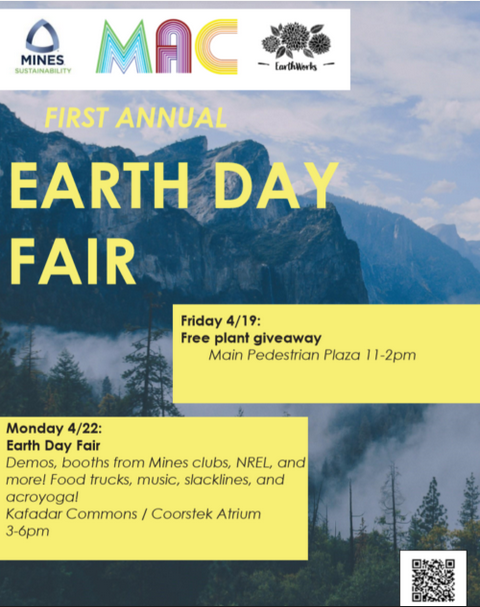
Sustainable Edgewater Seminar on Climate Change
We had great discussions about climate change last Tuesday at the Edgewater Library. Thanks to all the new faces and those of you who are there every week. Check out the Climate Change Seminar slides here.
If you’ve never seen the carbon dioxide emission visual from the National Oceanic and Atmospheric Administration, watch this at their site.
At the seminar, we first talked about the green house effect and the green house gas, carbon dioxide, its natural and human generation, and the isotopic properties of fossil fuels, which have a clear affect on the atmosphere’s C-12 to C-13 ratio. We discussed how over twenty-four thousand peer reviewed scientific articles discussing climate change measured up against the five which reject man-made climate change, as discussed on jamespowell.org. This gives scientific consensus on the topic. Exactly what is going to happen is still under debate.
Really important, was the timescale for our climate, for which we have been in a perfect scenario for about 8,000 years since the end of the last ice age. Of course the climate has changed before, but not since we’ve settle the major river deltas, that have been stabilized by consistent sea levels. This led naturally into the rising sea levels, which rate has doubled since last century. We’re on track for about 3 feet of rise by century’s end. Next we looked at how the poles are warming faster than the rest of the planet, and one hypothesis how that may be changing our jet stream pattern. Alaska again, has seen records warmth in 2016 across the state.
Some of the heavier topics were upcoming climate refugees, who have no legal status yet. (see links below) And how some nations are already negotiating acceptance for their people to foreign nations as escape. A serious group preparing for climate changes is the defense department and has indeed written a living document called the DOD Climate Change Adaptation Roadmap. Megadroughts, droughts lasting 35 years or more have occurred historically, and based on models of soil and weather moisture indicate significant increases in probability in the southwest and central plains of the US. One of the more troubling indicators for me is the coupled trend between rising CO2 levels and ocean acidification, where the ocean has become 30% more acidic in the last 25 years, resulting from a drop in pH by just over 0.1. Recall that pH is logarithmic with base 10. We also looked at the Mediterranean drought maps from 2011 which support the idea that Syrian conflict is not being helped by their drought.
Then the polls: Who believes climate change is real? China was #1, while US was last and closely followed by Britain. We learned about some useful resources like skepticalscience.com and the climate myths. There’s also two good reads to recommend on obscuring the truth: A book, “Merchants of Doubt” by Naomi Oreskes, and National Geographic’s “War on Science” March 2015.
But there’s been some good news too. British Petroleum and other oil companies are beginning to warn of CO2 effects and global warming. And there’s things we can do to. On my street this week, new solar panels were going up on my neighbor’s roof. Renewable energy and variations of carbon free energy systems are becoming more popular. Energy efficiency is also on the rise, with LED lighting saving energy for every bulb replaced. Of course there’s a conundrum, when we have higher efficiency will we save energy and emissions or will we just have more and more things to run? I’m not sure on this one.
I have to thank Chuck Kutscher from the National Renewable Energy Lab for posting his presentation and talk video on the web. I highly recommend this for anyone who wanted to attend but couldn’t. I based my talk on his and also showed many of those slides.
Finally, if you are looking for some more links to interesting articles, check these out:
- https://www.nytimes.com/2016/05/03/us/resettling-the-first-american-climate-refugees.html?_r=0
- https://www.theguardian.com/environment/2016/dec/01/climate-change-trigger-unimaginable-refugee-crisis-senior-military
- Example of a Sinking State
“The island nation of Tuvalu has struck an agreement with New Zealand to accept its 11,600 citizens in the event that rising sea levels overtake the country. Tuvalu is made up of eight tiny coral atolls, with a total land area of just 26 square kilometers (10 square miles). The highest point in Tuvalu is only 4.5 meters (14.7 feet) above sea level.” http://www.nationalgeographic.org/encyclopedia/climate-refugee/ - Low lying areas at risk: Maldives, Venice, Manhattan, New York; London, England; Shanghai, China; Hamburg, Germany; Bangkok, Thailand; Jakarta, Indonesia; Mumbai, India; Manila, Philippines; and Buenos Aires, Argentina
- Watch CO2 accumulation here http://www.esrl.noaa.gov/gmd/ccgg/trends/ff.html
- Learn about climate skepticism skepticalscience.com
Emerging Areas in XPS, You can teach an old spectrometer new tricks!
I am so thankful to everyone who attended this colloquium in the physics department at Colorado School of Mines. Our discussion began back in the 1880s with Hertz’s 1st observation and covered many practical aspects of photoelectron spectroscopy. In case anyone wants to look over the presentation, it’s here for you. Please cite it appropriately if you use any parts of it (as you see that I’ve done!). xps-colloquium-2016-web
Autonomous vehicles enable spherical tires

I just wrapped up an exhilarating lecture on transportation. As usual, I feel as I’ve been on a long hike, reached the summit to enjoy the view, and now I’m on my couch feeling somehow transformed but unsure what’s next. One video I shared with the class was from our Department of Energy and shown above. It focused on electrified roads and how that could benefit energy efficiency. This could be a big deal for drivers, but it seems like a big challenge to implement.
Then three minutes later, while checking email from a materials research conference, my mind was blown away. Now, as a scientist researching the fundamental properties of nature and materials, my mind gets blown fairly regularly, which I love my job for. But this was different.
I’ve been wondering how the autonomous vehicle movement would affect me. First, can I get one? I’ve evolved from a hot-rodding teen to a slow and safety first grandpa type driver. Honestly, now I’d like to hit a button and enjoy the ride. Second, the ethical questions are really troubling. Car: “In this unexpected scenario, shall I risk my two passenger’s safety or run over those three children?” Then, like the cell phone, what will this new thing do to change us?
For the last point, let’s think to our mastery of growing plants, and to see society evolve from abundant biofuels and human sustenance. Similarly, the human-petroleum synergy is undeniable in our transportation and leveraged the one of the first and biggest inventions: the wheel.
Thinking that far back in modern society and really useful stuff, I see the GY360 trying to go beyond a fundamental part of our lives. It really caught my attention. I was like, “whoa!”
But before we go any further, you must watch this video from GoodYear. For the techies, pause the video at 25 seconds to peek inside the concept tire to see: what might be an internal power supply, rotation mechanism, inertia transfer devices and gyroscopic rotators. The imagery gets me thinking of how possible this really is! The rest of the video shows how these tires drive.

Yes, that could change how we drive. Four independent spherical tires enabled by autonomous computer navigators. Stable, self adjusting, self rotating, magnetically levitating cars on total autopilot adds more options for the vehicle to maintain safe, stable travel. I can’t imagine a steering wheel that could control these tires’ advanced maneuverability and features. I wonder how race cars might look with dynamic GY360 traction.
But what about energy efficiency? Engine efficiency might not be the question we need to answer. There’s other key questions such as, can we integrate battery technologies that control the differential inertia for the tires? How do we keep them cool if the propulsion is internal to the tire? If the force is directed from the car into the tire, how do we do that efficiently?
In one year, not much about the way we drive will change. In ten years, we could see a few new options for “refueling” that might be hydrogen for fuel cells or hydrogen combustion engines, perhaps with a variety of electricity options for batteries and a larger fraction of electric motor vehicles. In about 20-30 years, we can expect some transformations of how we drive. Where things will change is still uncertain, but change is certain. Autonomous vehicles are next.
Do you have a transportation idea that you’d like to share? Post a comment or drop me a line.
Drive on!
Dynamic Photoelectron Spectroscopy – a non-equilibrium technique
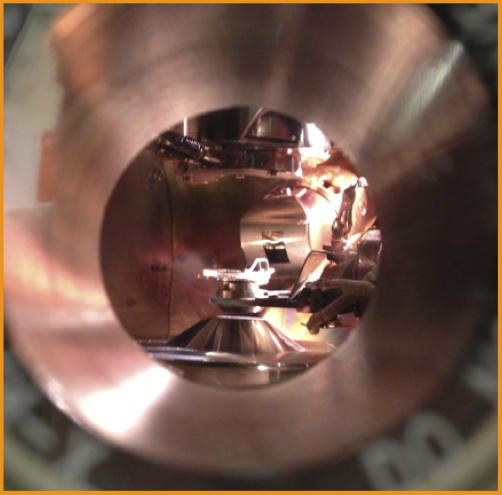
When one learns the rules of a particular approach, for the curious, it becomes a challenge to learn how to break them and to expand the limits. Since I’ve visited Dr. Cohen’s lab in Weizmann, my XPS experiments have presented me with too many opportunities for new directions. From electronically insulating ionic conductors to defect mediated photoconductivity in nanostructures, dynamics have been challenging me to think in new ways about XPS.
Many XPSers think of insulators as a nuisance that require charge neutralization to get any useful information at all. This perception stems from the persistent accumulation of photogenerated holes (+ charges) during continuous emission of X-ray generated photoelectrons. As these charges build up in the poorly conducting material, the surface potential shifts and the spectrometer’s Fermi level is no longer in equilibrium with the sample. In fact, a variety of other reasons can also account for non-equilibrium including heterojunction stabilized electron-hole pairs, thermal gradients and changing sample properties to name a few.
But really, why not measure insulators with XPS? We can learn so much about material interactions with charges, light and heat if we can model the non-equilibrium behavior. Actually, XPS is an ideal tool to assess the potential shifts during charging conditions. In principle, this is an electrostatics problem with well defined boundary conditions such as a fixed backplane via grounding and measurable surface potential via core level offsets. This is just what Dr. Hagai Cohen has been doing for nearly 20 years at Weizmann Institute to reveal properties of dielectrics for energy applications. In an older Nature paper summed up nicely in a news release, the reporter described the advantage of asymmetric potential profiling as deciphering what’s in a layered cake. As the sample is pushed further from equilibrium, the atomic constituents may reside along different segments in a potential gradient that depend on their location. By analyzing the core level shifts under non-equilibrium conditions, new things are informed. First, the atomic locations of elements relative to the sample surface are revealed. An extension into 3D provides a fantastic new approach for identifying locations of dopants or chemically heterogeneous nanostructures at the atomic scale. Further, when providing an external stimuli (light, electrons, heat, etc.), the nanoscale electronic responses can transform standard measurements (current-voltage, photoluminescence, etc.) into chemically resolved electrical responses. This gives a unique approach to evaluating functional nanostructures.
Dielectrics are particularly useful in this approach called Chemically Resolved Electrical Measurements (CREM) because they enhance the charging effect and enable generation of larger electrostatic fields during XPS. A great example of this is given by one of the most important solar energy heterojunctions, the silicon – silicon oxide heterojunction, which help provide electricity from many home’s roofs. In this case, CREM reveals the resilience of the insulating layer against electrical breakdown, a key metric for evaluating electronically active defects. This is a great example of not taking the current paradigm as static, but allowing one’s curiosity to guide the next steps.
If you are interested in CREM, XPS or anything about photoelectron spectroscopy, post a comment, drop me a line or get in the lab and try something new!
Happy XPSing!
A Lesson on Climate Change
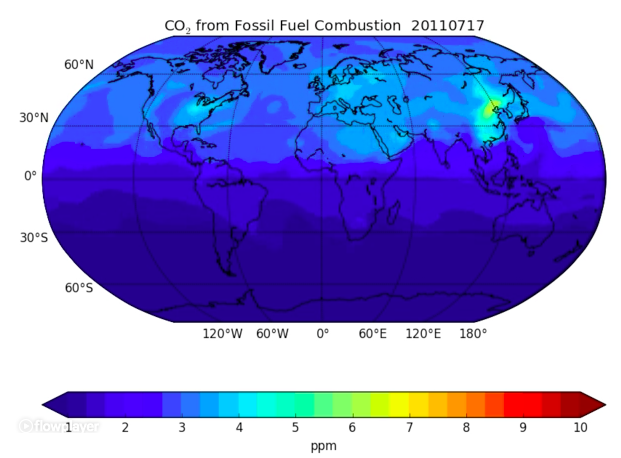
This semester I have the great fortune to teach on the subject that drew me back to college with hopes to do important and meaningful work: Energy. As the semester ramped up, one of the first lessons has stayed on my mind. Our energy use and impact on the climate have begun and will continue to change our comfortable little biosphere for at least the next hundred years. That is even if we completely turn about face and lower carbon emissions tomorrow. That’s because of the large and rapid release of green house gasses during our industrial revolution. In other words, a return to pre-industrial carbon cycle equilibrium is not likely this century, and even this millennium. What’s likely, are each and every one of us seeking more energy resources to increase our quality of life and impacts on the biosphere. Looming effects are on sea levels, ocean life, extreme weather, water and food resources, arable land, diseases and huge losses of biodiversity. These factors determine the biological health of our ecosystem. Some tout the opportunities of climate change for economic growth, which is very optimistic. More likely are enormous costs of rebuilding and loss of life. Some point out that our climate models are unable to predict the effects for CO2 levels above 400 parts/million and unknown feedbacks (these compound compound green house gas effects) such as unforseen rapid ice melt or early spring thaws, could make the earth hostile for humans, which is on the other hand very pessimistic. Regardless in our beliefs, economic interests or trust in human knowledge, our home is changing and it is our responsibility to ensure survival of the human race.
In many ways we have failed to provide sustainable life to our cohabitants on earth going back in time to the Mammoths (hunted to extinction by humans 10’s of millennia ago), the American buffalo (joyfully exterminated by railway sportsman in the 1800s) and nearly U.S.A.’s own symbol of freedom, the bald eagle.
Our environment sustains us and its health now and in the future will determine ours. Given that our world is changing and us with it, to secure our own survival we’ll need to provide clean air, water, food access and shelter for a very long term. For all of these basic human needs we will need energy and LOTS of it! Now, what would a sustainable energy portfolio look like?
A lesson in Ultraviolet Photoelectron Spectroscopy
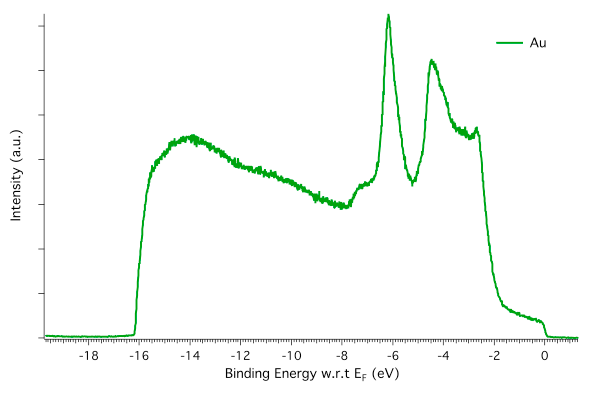
This fall, I had great fun teaching a graduate lecture at the Colorado School of Mines on the topic of Ultraviolet Photoelectron Spectroscopy (UPS). The first question I asked the students was “How many of you have taken some form of solid-state?” About half the hands went up. But for the lecture, we needed a bit more background. Very quickly we covered the band structure of metals and semiconductors, the Fermi energy and why these are so important for technology. What impromptu fun that was! At this point, we were able to really dive into UPS with diagrams and the key properties observable with UPS. I handed out data I had taken on gold and fullerene thin films. After explaining how to analyze the gold spectrum, students worked in groups of two and three. I attempted to view their learning experiences with fresh eyes and to encourage curiosity on the spectral details. After calculating the the work function and ionization energy of the separate materials, we constructed a band diagram for this hybrid heterostructure and enjoyed a brief discussion on the molecular structure of C60. The lesson outline and sample data are available here: UPS lesson (PPT).
An introduction to research
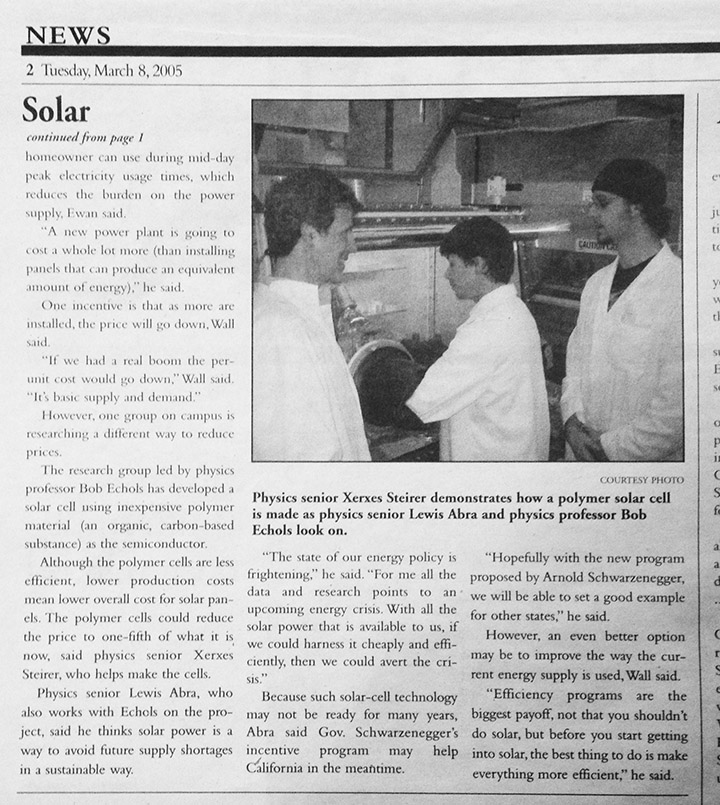
Dr. Bob and I met at orientation day for undergraduate transfer students. A year later, Lewis, Dr. Bob and I were making solar cells out of plastic and other materials. My introduction to renewable energy materials research could not have been better. California Polytechnic State University (Cal Poly) has an advanced polymer electronics lab headed by Dr. David Braun in the EE department. Dr. Braun’s experience, Dr. Bob’s enthusiasm and our time in lab helped shape our undergraduate experiences and give us a boost towards careers in renewable energy.
